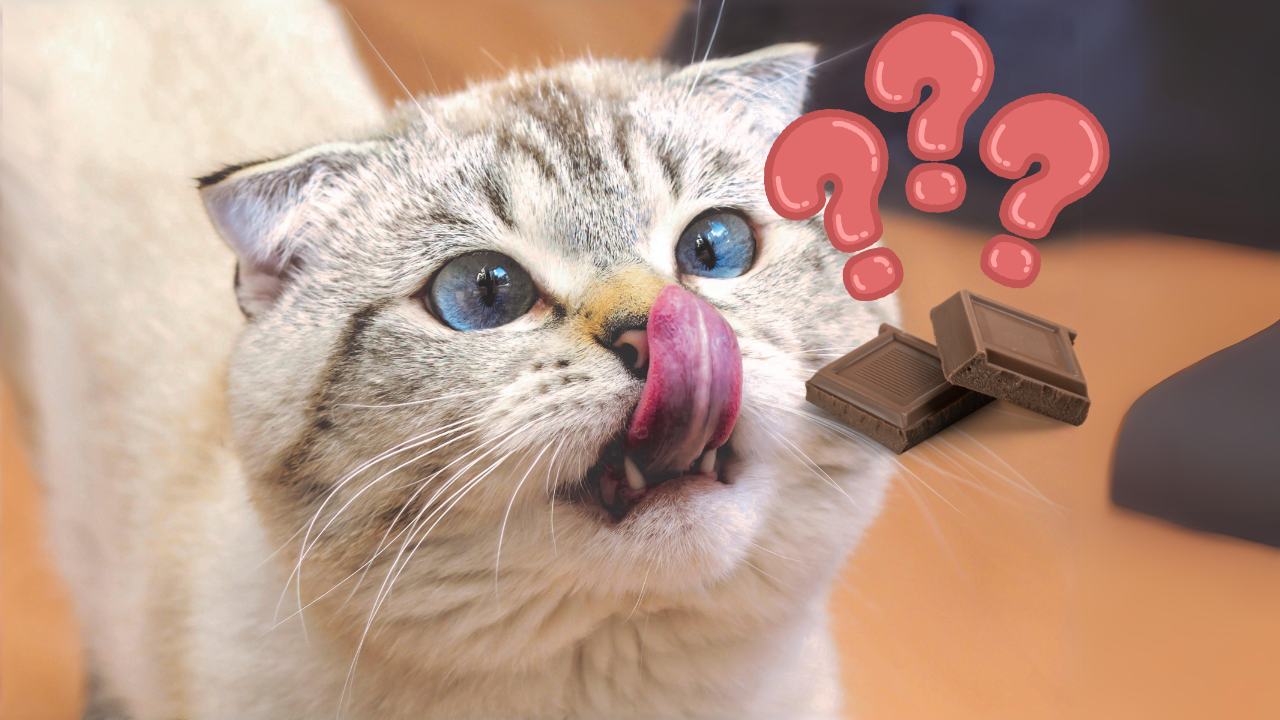
Chocolate is a popular and beloved treat for humans, but when it comes to cats, it’s a different story. The question “Can cats eat chocolate?” is commonly asked by concerned pet owners. The answer is NO. Chocolate can be extremely dangerous for cats. In this article, we will explore why chocolate is hazardous for cats, the symptoms of chocolate poisoning, and what steps to take if your cat accidentally consumes chocolate.
Why Is Chocolate Dangerous for Cats?
Chocolate contains two primary toxic substances for cats: theobromine and caffeine. While humans can metabolize these substances efficiently, cats cannot, making even small amounts potentially lethal.
1. Theobromine
Theobromine is an alkaloid found in chocolate that has a stimulating effect on the central nervous system and cardiovascular system. Cats are unable to metabolize theobromine quickly, leading to its accumulation in their system, which can cause severe toxicity.
2. Caffeine
Caffeine, similar to theobromine, is a stimulant that can adversely affect a cat’s nervous system and heart. Although chocolate contains less caffeine than theobromine, it still contributes to the overall toxicity.
Types of Chocolate and Their Dangers

The danger level of chocolate depends on the type of chocolate and the amount consumed. Here are the common types of chocolate and their relative hazards:
1. Dark Chocolate
Dark chocolate contains the highest levels of theobromine, making it the most dangerous type of chocolate for cats. Even a small amount of dark chocolate can cause serious poisoning.
2. Milk Chocolate
Milk chocolate has lower theobromine content than dark chocolate but is still dangerous. Consuming a large quantity can be harmful or even fatal for cats.
3. White Chocolate
White chocolate contains very low levels of theobromine. However, it is high in sugar and fat, which can lead to digestive issues and obesity in cats. While less toxic, it is not safe for feline consumption.
Symptoms of Chocolate Poisoning in Cats
If your cat ingests chocolate, symptoms of poisoning can appear within a few hours. Common symptoms include:
- Vomiting and Diarrhea: These are the most immediate and common signs of chocolate poisoning.
- Increased Heart Rate: Theobromine and caffeine can cause a significant increase in heart rate, leading to cardiovascular problems.
- Tremors and Seizures: Stimulants in chocolate can cause muscle tremors and, in severe cases, seizures.
- Difficulty Breathing: Severe poisoning can lead to respiratory distress and failure.
- Increased Thirst and Urination: The toxins can cause dehydration and increased urination.
What to Do if Your Cat Eats Chocolate
If you suspect or know that your cat has eaten chocolate, act quickly by following these steps:
1. Contact Your Veterinarian
Call your veterinarian immediately and explain the situation. They can provide specific advice on what to do next and may recommend bringing your cat in for an examination.
2. Do Not Induce Vomiting
Do not attempt to induce vomiting unless directed by a veterinarian. This can be stressful and potentially harmful to your cat.
3. Monitor Symptoms
Closely monitor your cat for any signs of chocolate poisoning. If symptoms such as vomiting, tremors, or difficulty breathing appear, take your cat to the veterinarian immediately.
4. Veterinary Treatment
At the veterinary clinic, the vet may induce vomiting or perform gastric lavage to remove the chocolate from your cat’s stomach. They might also administer activated charcoal to prevent further absorption of theobromine and provide supportive treatments such as intravenous fluids and medications to stabilize your cat.
Preventing Chocolate Poisoning
To prevent chocolate poisoning, take these precautions:
- Keep Chocolate Out of Reach: Ensure all types of chocolate are stored in places inaccessible to your cat.
- Supervise Your Cat: Keep an eye on your cat, especially during holidays when chocolate is more readily available.
- Educate Family Members: Make sure everyone in the household understands the dangers of chocolate for cats and avoids giving them any food containing chocolate.
Conclusion
Cats should not eat chocolate due to the presence of theobromine and caffeine, which are toxic to them. Chocolate poisoning can cause severe symptoms and even be life-threatening. Therefore, it’s crucial to protect your cat from exposure to chocolate. If you suspect your cat has ingested chocolate, contact your veterinarian immediately for guidance and treatment. By understanding the risks and taking preventive measures, you can ensure your feline friend lives a healthy and safe life.


